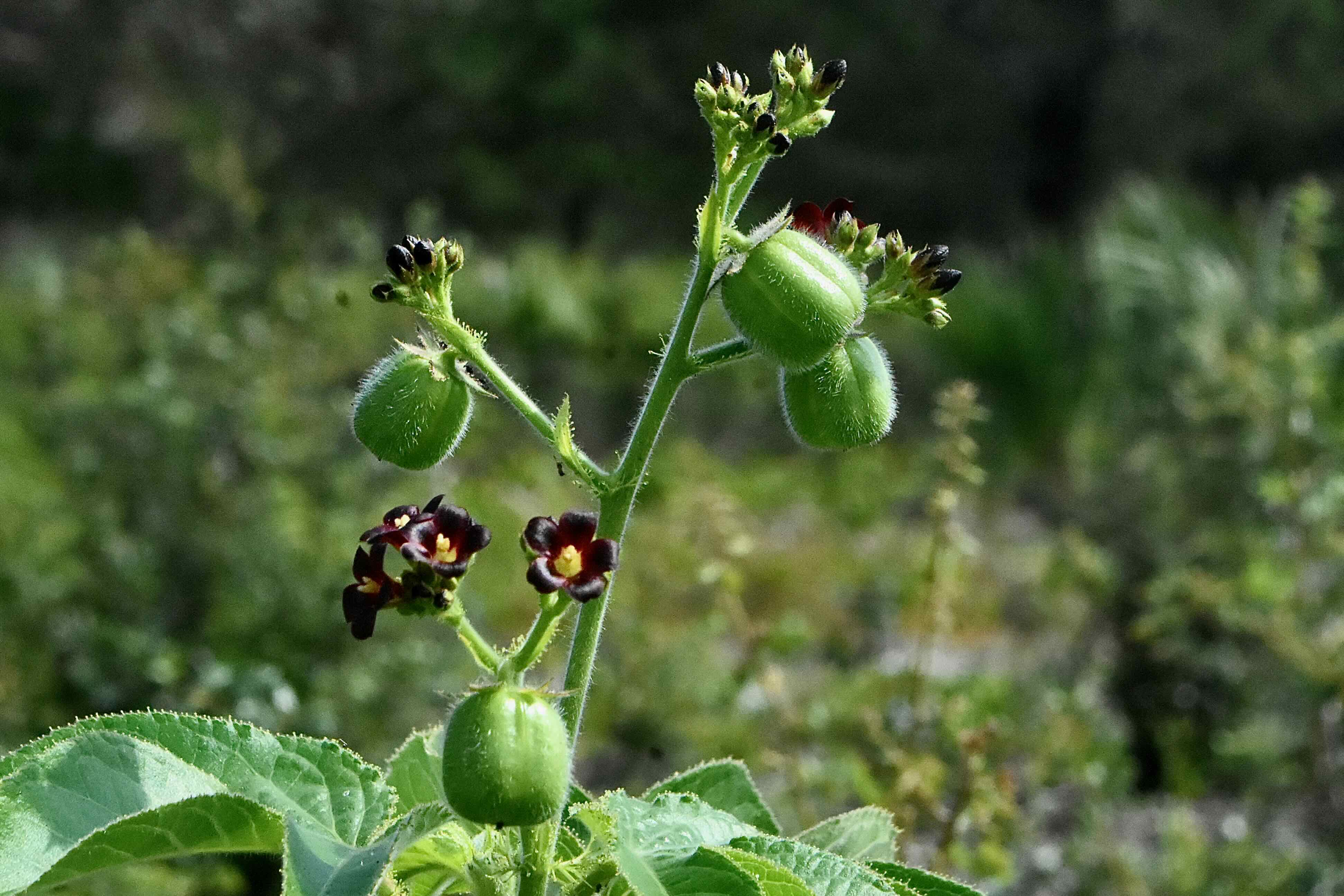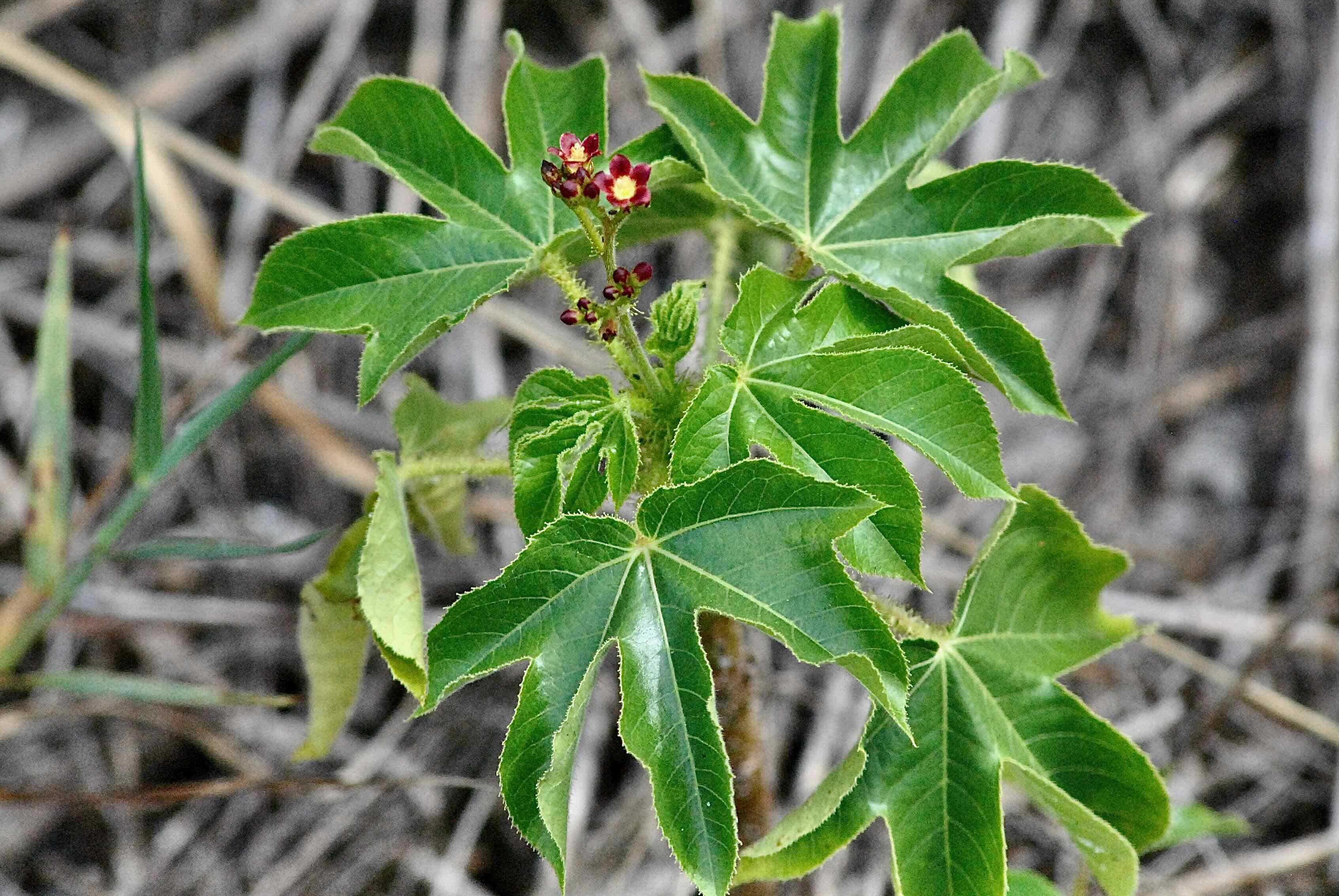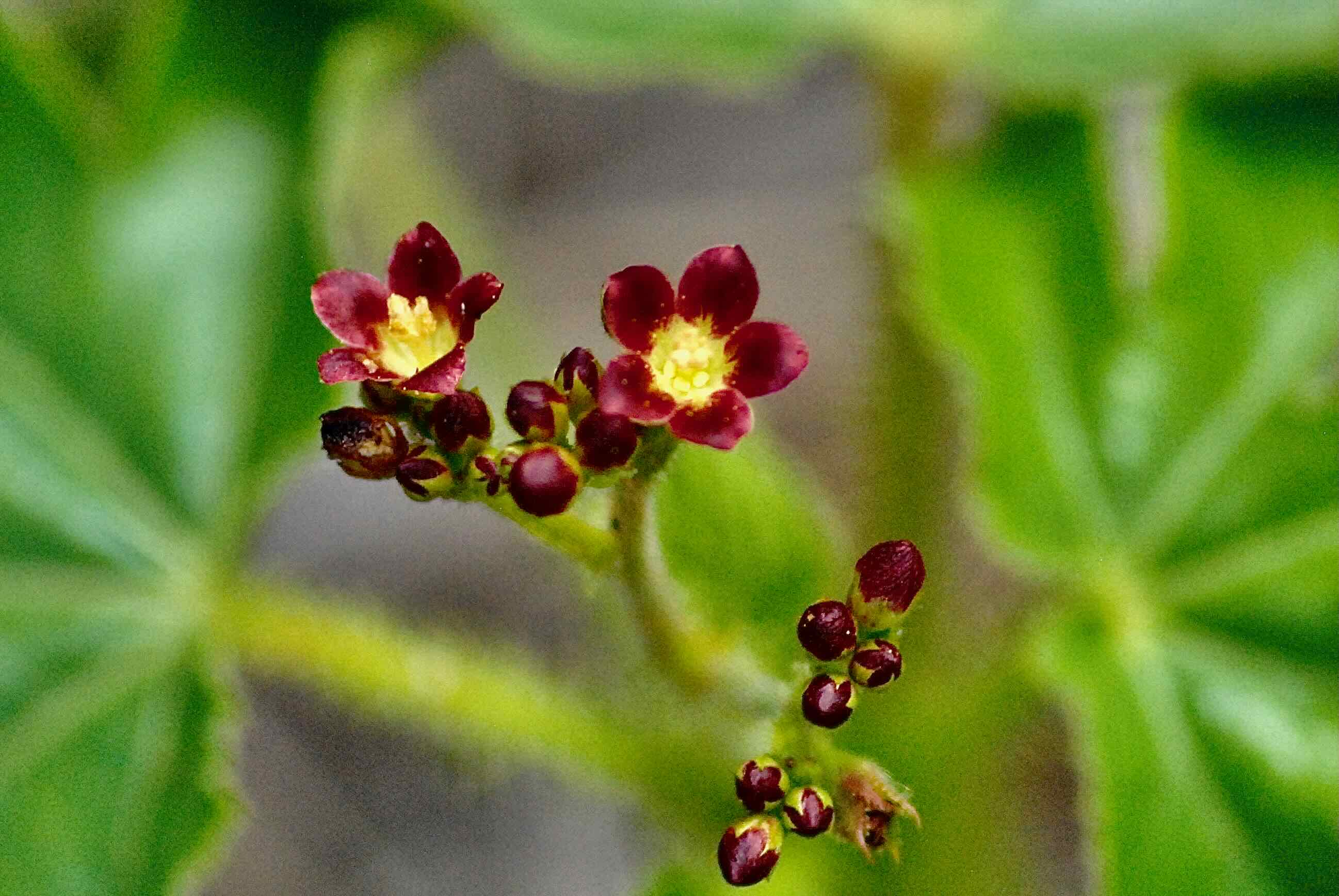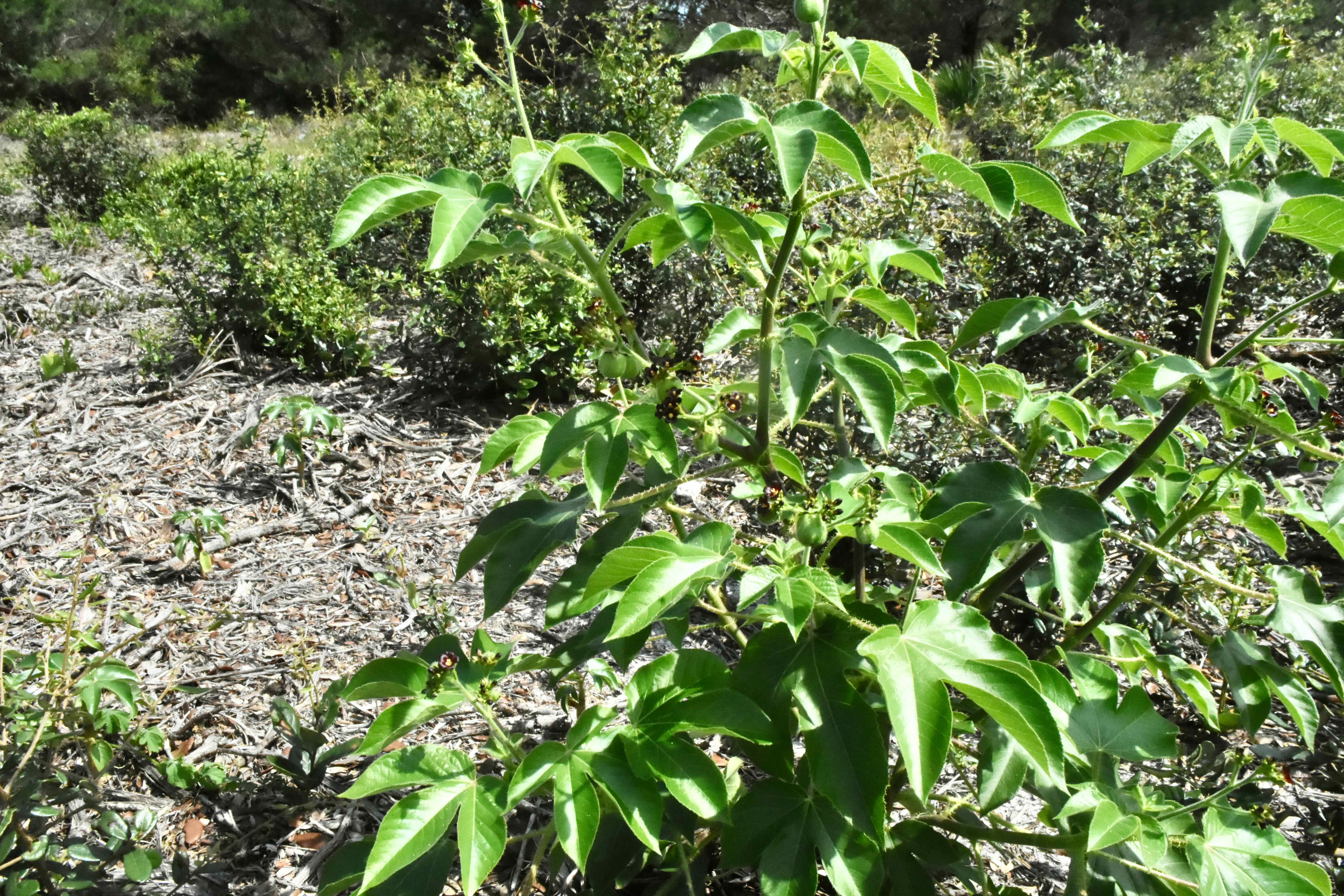
Bellyache Bush, photographed at Seacresst Scrub Natural Area, Boynton Beach, Palm Beach County, in April 2021.
We’re not sure how bellyache bush. Jatropha gossypiifolia got its name, either as a cause of a sore tummy, cure for a sore tummy or both, because it does both.
The plant is a virtual chemical factory, manufacturing a lengthy list of compounds, some helpful, some harmful. Ingest the plant and there’s a good chance that it will make you sick. On the other hand, in traditional medicines, it’s been used among other things as a purgative, or in plain English, to cause you to vomit and expel whatever it is that’s upsetting your stomach.
Kids, don’t try it at home. Adults too, for that matter.
In any case, bellyache bush is most likely a naturalized plant here in Florida. Most sources we typically use, such as the Atlas of Florida Plants and the Institute for Regional Conservation in Delray Beach say it’s non-native, a plant used as an ornamental that somehow found its way into the wilds of Florida.
However, the U.S. Department of Agriculture’s PLANTS Database says it’s native. The definition of native is any plant that was here when the first Europeans touched our soil. Given that its native range includes parts of the Caribbean, it's not all that hard to believe that it is, in fact, native. But in cases like this where opinions clash, we tend to lean toward the opinion of the local experts.
Native or not, bellyache bush is rare in South Florida; the IRC has found it growing in only four conservation sites within the region. Back in 2013, we discovered it growing in Seacrest Scrub Natural Area in Boynton Beach, a site not on the IRC’s list.
However, it took us years to identify it in large measure because of its rarity.
The Florida Plant Atlas lists 6 counties where bellyache bush as been vouchered, or scientifically verified, including Collier, Miami-Dade and Broward in South Florida, plus Hillsborough, Pinellas and Manatee. (Our find in Seacrest — Palm Beach County — is not vouchered, but we are certain that it is, in fact, bellyache bush.)
As we’ve seen it, bellyache bush is a low-lying shrub, less than 18 inches tall. But it can get quite tall in the right environment, potentially hitting 13 or 14 feet off the ground. Leaves are simple but deeply lobed. New leaves can be a dark purple with three lobes; mature leaves are green and can have as many as five lobes, giving them the look of a hand with five fat fingers. The leaves are covered with brown hairs; the margins, or edges, are serrated. Each leaf sits atop a long stem.
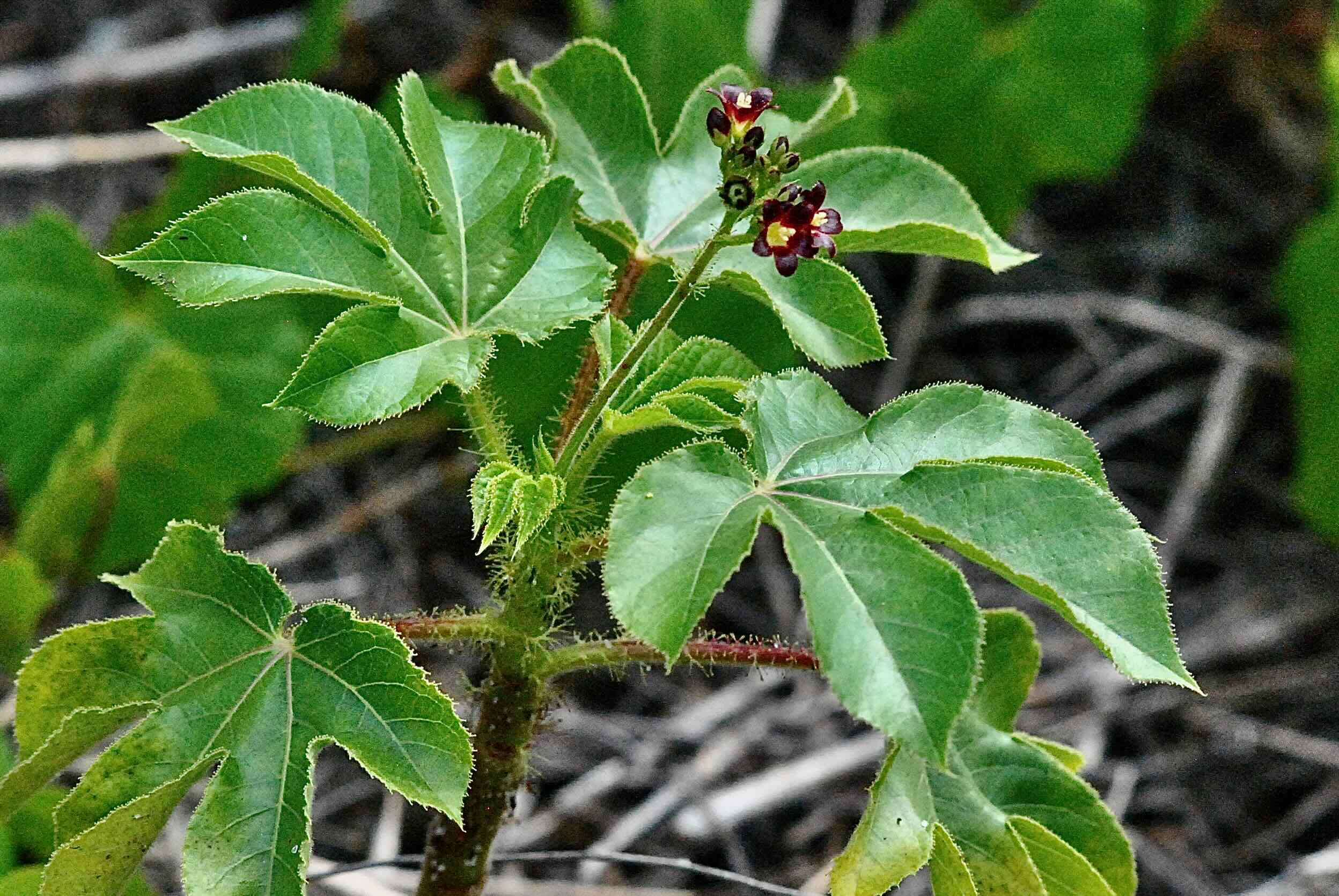
Stems are woody or succulent and hairy. They can have few branches or many. The flowers are small, less than a half-inch in diameter, with five deep red petals and a yellow center. The fruit is a seed-filled pod that looks like a small green bell pepper. It can be highly variable in its looks; according to the Flora of North America, it has more than 40 described varieties, subspecies, and forms.
Bellyache bush has some resemblance to castor bean, Ricinus communis, which is not surprising since they do belong to the same family, Euphorbiaceae. The flowers and fruit of the two plants are quite different, however.
Like other members of Euphorbiaceae, bellyache bush contains a white, latex sap that can irritate the skin.
Bellyache bush’s native range extends southward through the Caribbean, including Puerto Rico, Central American and into South America as far south as Brazil. It can be found as a naturalized plant in warmer places around the globe. In most places, including Florida, it’s well-behaved — we’ve not seen the bellyache bush in Seacrest Scrub spread beyond its original site during the decade-plus that we’ve been monitoring it. We should note, however, that the folks at the University of Florida warn against planting it because of its invasive potential. We're not going to argue with Gators.
However, it’s a different story elsewhere. Hawaii is the only other state where bellyache plant is found, and it’s classified as invasive there. In parts of Africa, including Kenya, Malawi, South Africa and Tanzania, it’s an invasive pest, as it is in French possession of Reunion and in Australia.
The problem with bellyache bush is multi-fold: it is a tough plant that is adaptable to varying conditions; it produces tons of seeds, figuratively speaking, that remain viable over long periods of time. It also can reproduce vegetatively, meaning pieces of bellyache bush that break off can set root and form a new plant.
Bellyache bush has few natural enemies. It also apparently excretes allelopathic chemicals into the ground. Theses are compounds that prevent other plant species from taking root nearby creating space for bellyache bush to spread and take over acres of land. Again, we note, it is better behaved here in the Sunshine State.
As we said earlier, bellyache bush manufactures myriad chemicals and extracts and decoctions made from various parts of the plant have been important components of traditional medicines, both human and vetinary. Among other things, bellyache bush has been found to have antimicrobial, anti-inflammatory, antidiarrheal, antihypertensive, and anticancer agents, among others. It’s been used to fight diabetes and break fevers and counter snake bites. There have been some lab studies supporting a few of its uses but no clinical trials testing its effectiveness in us human types.
The genus name, Jatropha stems from two Greek words, iatros, meaning physician, plus tropheia, meaning mother’s milk, a reference to the medicinal value of the member plants. The species name, gossypiifolia, is a mashup of the Latin, gossypium, meaning cotton, and folium meaning leaf. To the naturalist who described and named bellyache bush, the leaves appear similar to those of cotton plants.
Bellyache bush is known by literally dozens of common names in dozens of languages. The English list includes American purging nut, black physic nut, castor bean, cotton-leaf, jatropha, cotton-leaf physic nut, cottonleaf physic nut, figus nut, purging nut, red physic nut, Spanish physic nut, tree wild cassava, and wild physic nut. As noted above, bellyache bush is a member of Euphorbiaceae, a family of plants that includes poinsettias.
Seacrest Scrub Natural Area

